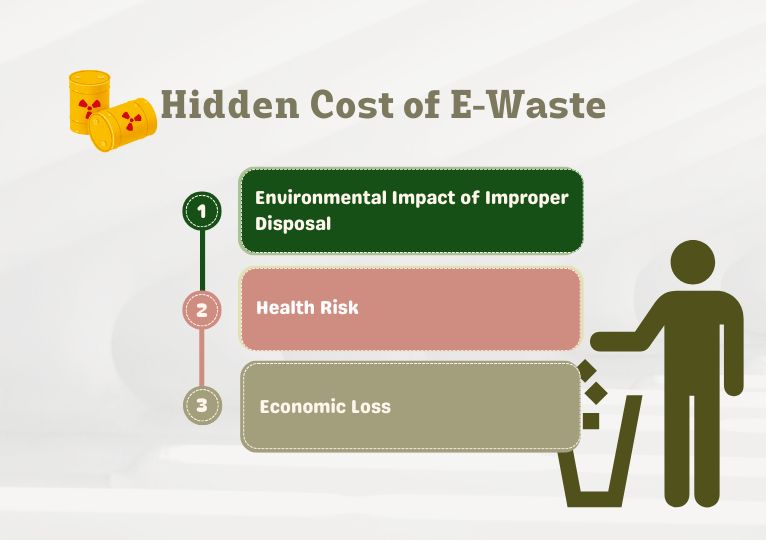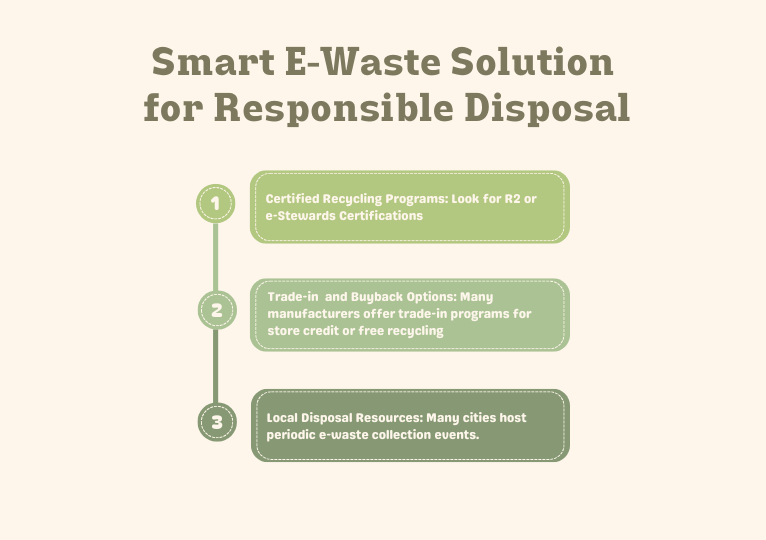Smart E-Waste Solutions: Protecting Our Planet and Future
The right e-waste solution goes beyond just clearing space in our drawers. Proper e-waste management protects our environment and safeguards public health while conserving valuable resources. Our choices about electronic device disposal carry significant risks for our planet's future.
People worldwide throw away more than 50 million tons of electronic devices each year. This massive waste equals 1000 laptops discarded every second. Our landfills overflow with old smartphones, tablets, and computers that create an environmental crisis affecting everyone.
Your e-waste decisions matter more than you might think. Let us show you how to measure your digital footprint and dispose of electronics responsibly. You will discover practical strategies to build a better relationship with your technology.
Table of Contents
- The Hidden Cost of Electronic Waste
- Understanding Your Digital Footprint for E-Waste Solution
- Smart E-Waste Solution for Responsible Disposal
- Building a Sustainable Tech Future
- Why Partner with USH India for E Waste Solution Needs?
- Conclusion
- FAQs
The Hidden Cost of Electronic Waste
At the time we throw away our electronic devices without much thought, we let loose a series of environmental and health hazards that often go unnoticed. Our world generated an overwhelming 62 million tonnes of e-waste in 2022, and only 22.3% was properly collected and recycled.Know the best solution for e waste treatment for your business! Call +91 79824 51415 now!
Environmental Impact of Improper Disposal
Improper e-waste disposal takes a massive toll on our environment. Toxic substances from electronics in landfills seep into our soil and groundwater. These devices release harmful chemicals, including:
- Mercury and lead, contaminating soil and water sources
- Brominated flame retardants affecting air quality
- Chlorofluorocarbons damaging the ozone layer
Health Risks to Communities
E-waste exposure hits our vulnerable populations the hardest. Millions of workers, including children, face exposure to toxic materials during informal e-waste processing. These exposures are linked to severe health problems, such as cognitive impairments and respiratory issues.
Economic Losses from Wasted Resources
Up to 7% of the world's gold might be sitting in e-waste right now. Poor e-waste handling wastes scarce materials like cobalt, indium, and neodymium. A better e-waste solution could save billions while protecting people and the environment.

Understanding Your Digital Footprint for E-Waste Solution
Your e-waste footprint starts with realizing how your usage patterns contribute to global challenges.
Calculating Your Electronic Waste Generation
Average device lifespans:
- Smartphones: 5-7 years
- Laptops: 5-6 years
- Television sets: 9 years
Impact of Upgrade Cycles
Frequent upgrades increase e-waste generation. Extending the lifespan of devices by even one year can significantly reduce environmental impact.
Smart E-Waste Solution for Responsible Disposal
The right e-waste solution starts with knowing your disposal options:
- Certified Recycling Programs: Look for R2 or e-Stewards certifications.
- Trade-in and Buyback Options: Many manufacturers offer trade-in programs for store credit or free recycling.
- Local Disposal Resources: Many cities host periodic e-waste collection events.

Building a Sustainable Tech Future
A sustainable tech future needs more than just proper disposal—it requires thoughtful decisions about device purchases and maintenance:
Choosing Eco-Friendly Electronics
Select energy-efficient devices made from recycled or sustainable materials with longer lifespans and repairable designs.
Supporting Right-to-Repair Initiatives
Advocate for repairable electronics to extend device lifespans, reduce e-waste, and create local repair jobs.
Why Partner with USH India for E Waste Solution Needs?
Conclusion
Smart choices about e-waste can create lasting environmental benefits. Certified recycling programs, trade-ins, and sustainable tech choices pave the way for a cleaner future. Together, we can build a better relationship with technology and protect our planet.
Get a Free Quote for Your E Waste Solution Today!>
Know About E Waste Recycling Noida
Know About E Waste Recycling Hyderabad
FAQs
What certifications should I look for in a recycling program?
Look for R2 (Responsible Recycling) and e-Stewards certifications.
Can old electronics be reused?
Yes, many can be refurbished or repaired. Trade-in programs and donations help extend their lifespan.
What materials can be recovered from e-waste?
Materials like gold, cobalt, and indium can be recycled to reduce mining needs and conserve resources.
